Cell signalling L1: Unicellular organisms
1/43
There's no tags or description
Looks like no tags are added yet.
Name | Mastery | Learn | Test | Matching | Spaced |
|---|
No study sessions yet.
44 Terms
Communication
Transfer of information
What communication allows us to do
Individual cells respond to stimuli from:
→ Other cells
→ Environment
What communication used for in multicellular organisms
control development
control activity of specifialsed cells
Signalling pathways done with…
Signal transduction
Structure of communication: 1 The pathway
Source transmitter generates signal
signal transmitted (with communication channel)
Receiver intercepts signal
Structure of communication: 2 start→ finish
information is transmitted when an event in the source reliably produces a response in the receiver
→ input results in output signal
Structure of communication: 3 Temporary signal
Signals are desired to be transitory:
→ since no information transmitted when the source and receiver are constantly in the same state
Structure of communication: 4 Protein properties
reliable communication results from 2 protein properties
binding sites with high affinity and great specificity
Conformational changes can alter these binding site activity
How does transmitter transmit signal
release diffusible signal molecule
through cell surface interactions (e.g surface bound signalling molecule)

How do recievers recieve the signal?
Receptors
target cell play key role in signal transduction
Target cells only respond to signal if
Signal is present
Receptor present
Signalling pathways for different distances use different chemical signals
Long distance→ pheromones and hormones
Intermediate distances→ local hormones
Very short distance→neurotransmitters, cell surface molecules and intercellular messengers
Distance ranges: nm→km
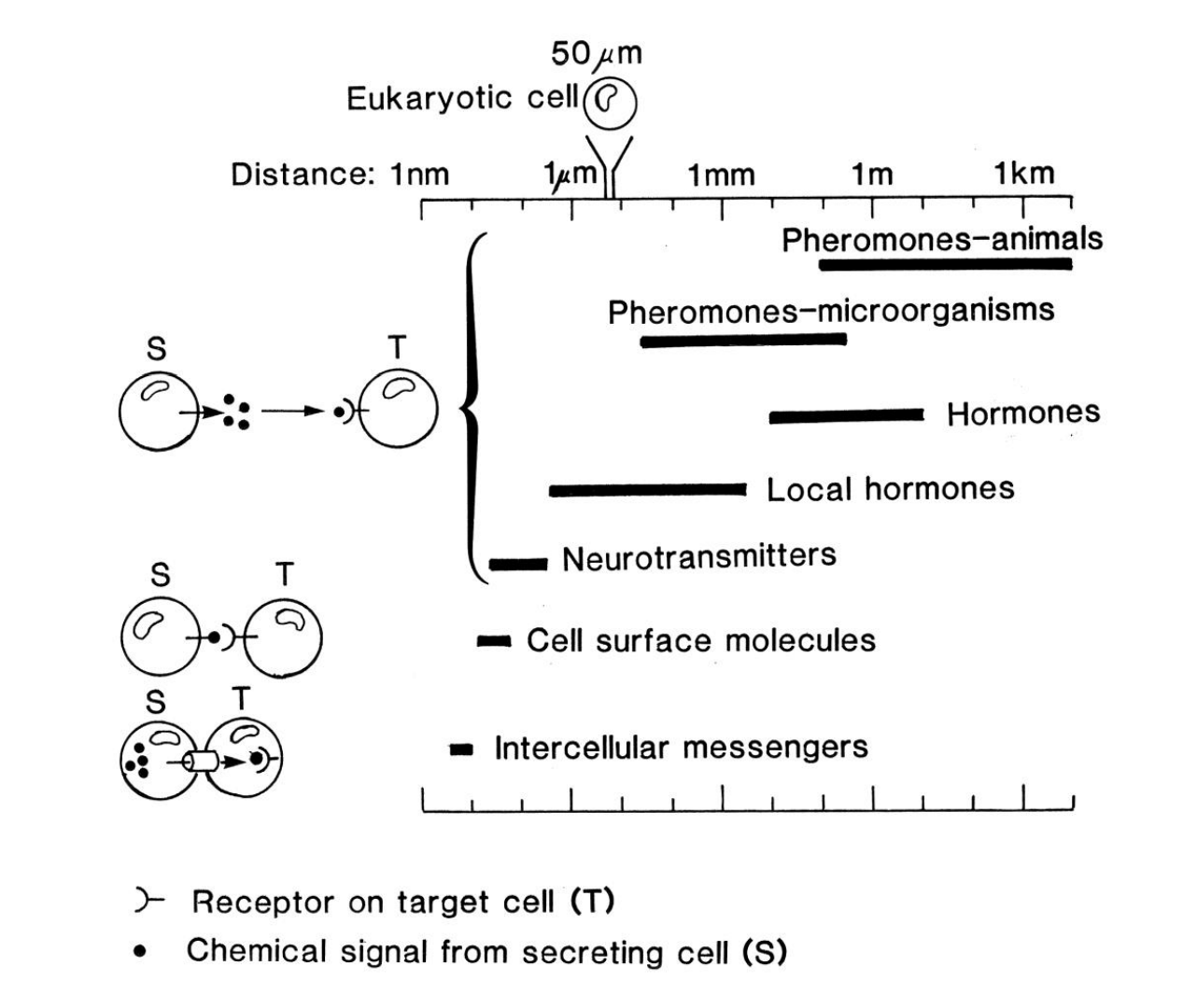
Features of the different chemical signals for their distances
Differ in:
molecular size
charge
hydrophobicity
volitlity
→ influences their biological activity
Examples of these chemical signals
Pheromones and chemoattractants
cyclic AMP
Bombykol
Hormones
insulin, testosterone, ethylele, ABA, gib
Local hormones
nitric oxide
prostagladin
Neurotransmitters
ACh, Adrenaline
Surface molecules
delta ligand
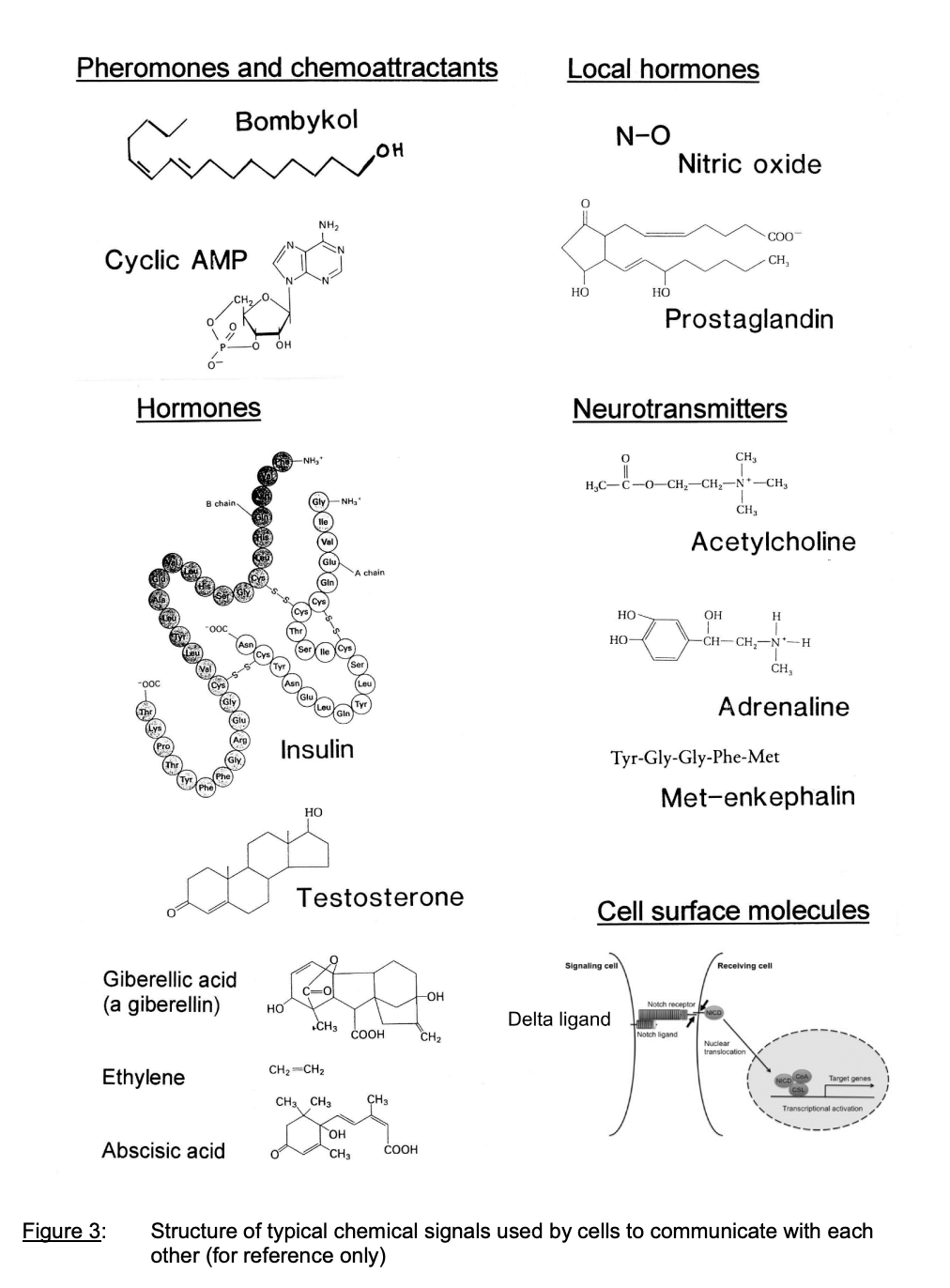
Pheromones
transmit info between organisms
→ e.g important for sexual reproduction
Examples of Pheromones (3)
Insects (silk worm)
sexual attraction
scent gland on abdomen release bombykol
volatile→ move through air up to 1km
attract male moths
Mammals (odorants)
food detection, sexual attraction, recognition, parental behaviour
(debated in humans)
olfactory endothelium in nose, thousands on sensory neurone→ odour receptors
Combinations→ millions different chemicals to smell
Slime mould
When conditions unfavourable
Free living amoebae→ aggregate fruiting body
Use cyclic AMP for chemotaxis to aggregate
Slime mould continued→ 2 forms
Suitable environment
spores germinate to form free- living amoebae
vegetative form where free-living amoebae move over the forest floor feeding on bacteria
Unsuitable environment (no food)
stop dividing
aggregate together to for fruiting body
develops to contain dormant spores
→ these then used when environments suitable again
Slime mould continued→ Chemotaxis
Founder cells secrete cyclic AMP
chemoattractant→ directs neighbouring cells to aggregation centre
Detection of cAMP by membrane bound receptors
formation of pseudopod
movement towards the cyclic AMP source
Can be induced experimenting with pulse of cAMP with micropipette
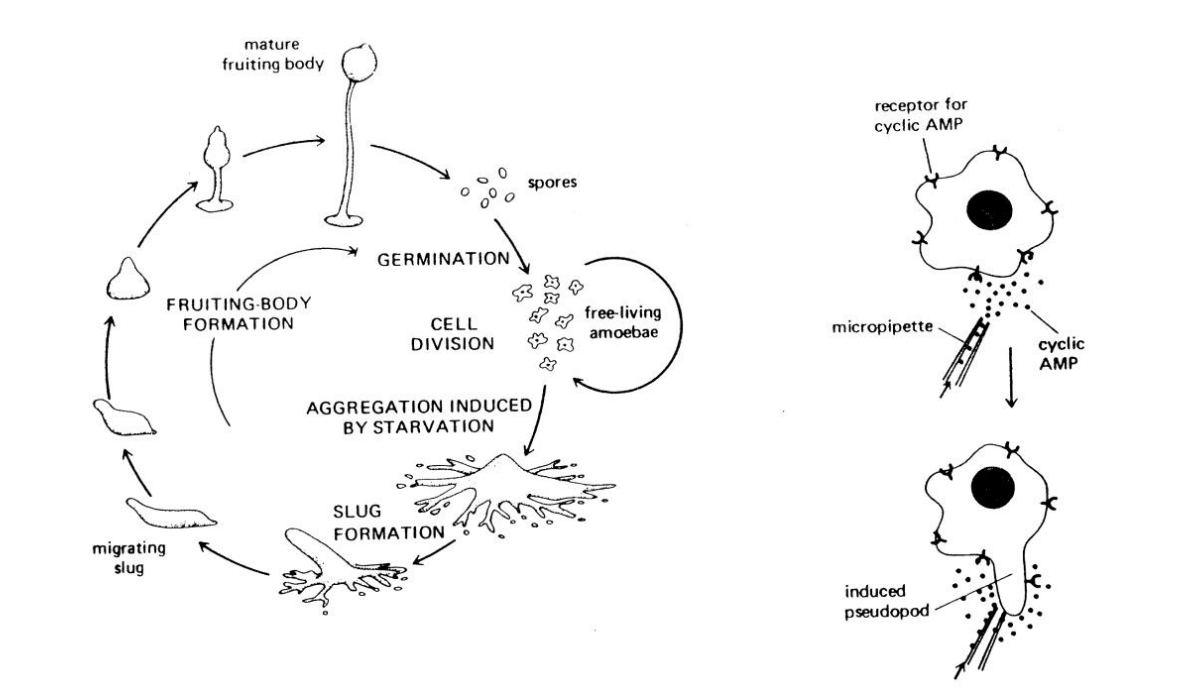
Hormones
released from one cell type to influence activity of distal target cells
Hormones in plants how spread
bulk movement of
water
photosynthate
Hormones in animals how spread
circulatory systems
Types of hormones
Protein hormones (e.g growth factor)
synthesised and secreted by ER-golgi-secretory pathway
Steroid (hydrophobic) hormones
made by enzymes on smooth ER
diffuse into circulatory system
Examples of hormone functions and sources in mammal
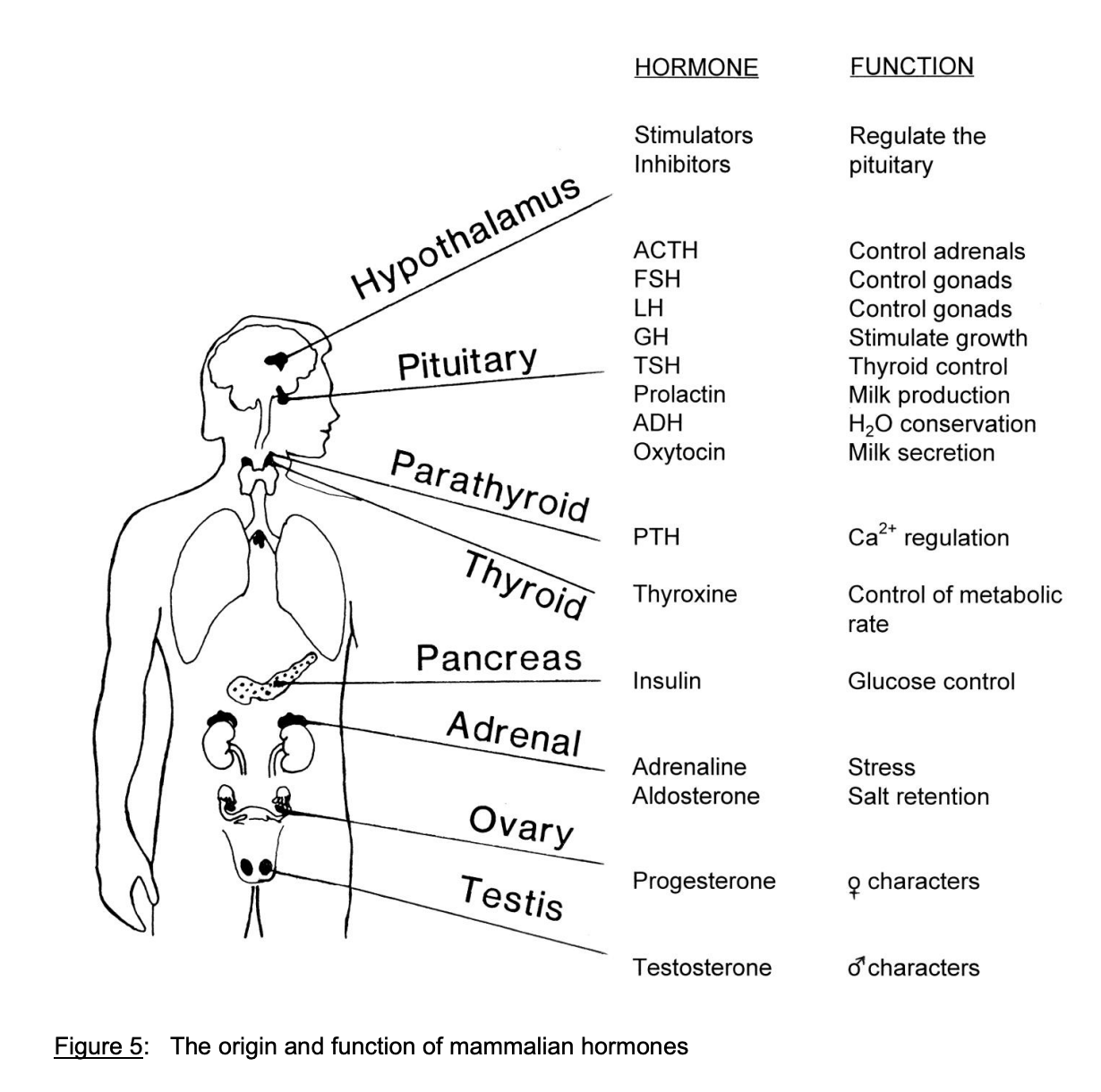
Local hormones where act?
Immediate vicinity of secreting cell
transmit info to
→ neighbouring cells paracrine
→ back to themselves autocrine
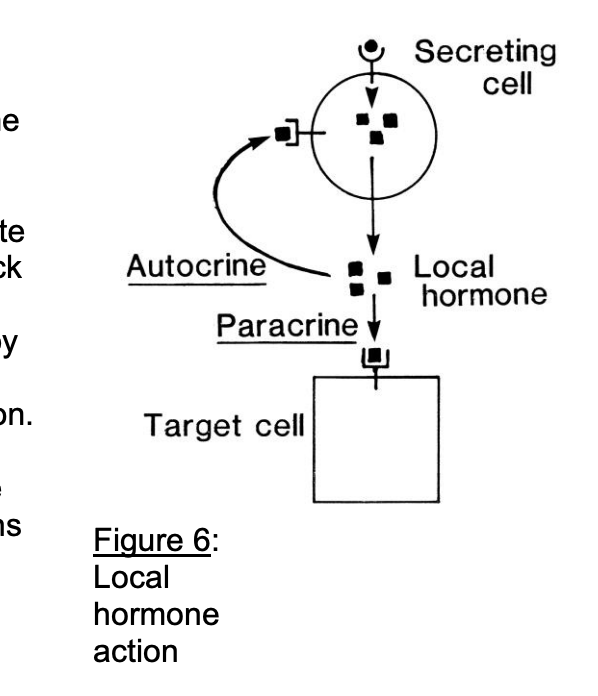
How local hormones spread
diffusion
How does this diffusion affect their action?
Effect is limited
due to rapid inactivation
VIP (vasoactive intestinal polypeptide) is considered a local hormone
Local hormones examples
NO (nitric oxide) → smooth muscle contraction
Prostaglandins→ blood clotting
VIP (vasoactive intestinal polypeptide) is considered a local hormone
Neurotransmmitters where released
released from nerve ending
to activate target cells:
→ other nerves
→ muscle cells
→ other neurons
Structure of a neurone
Dendrites→receive signals from other neurones
Cell body→ contains the nucleus
Axon→ long thin fibre that conduct AP at 10-100m/s
Axon Terminals→ where neurotransmitters are stored and released
Where are neurotransmitters made and released?
small molecules e.g ACh
synthesied and packaged at nerve terminal
E.g signal transduction process at neuromuscular junction
ACh made
Packaged into synaptic vescile
AP arrives→ invokes Ca2+ ending
Stimulate exocytosis
ACh diffuses across synaptic cleft
Binds to nicotinic receptors
Depolarisation of membrane→ muscle contraction
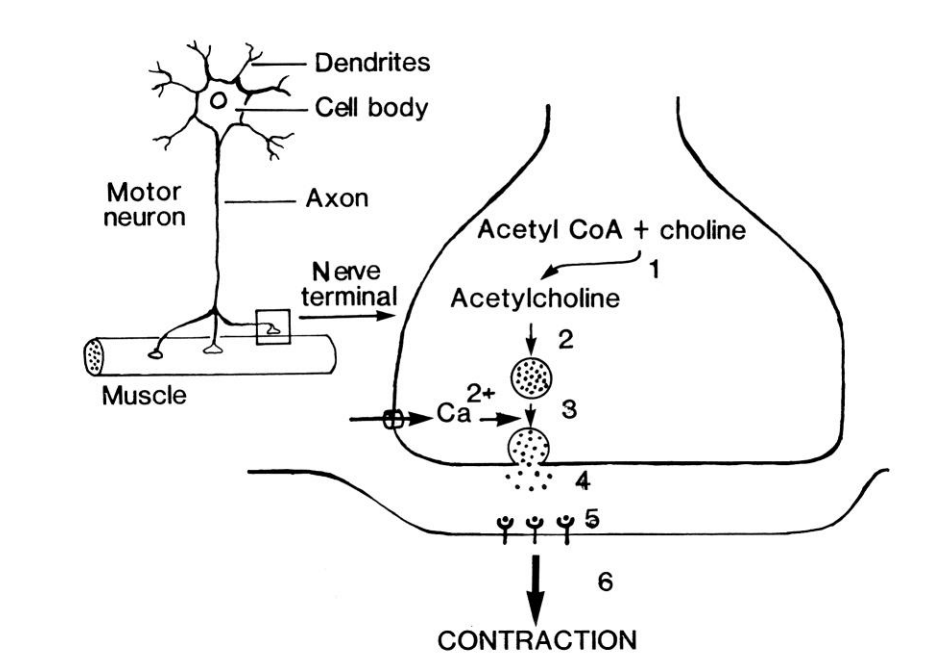
Cell surface molecules where found
great variety in multicellular organisms
Cell surface molecules function
cell-cell interactions
or
cell-matrix interactions
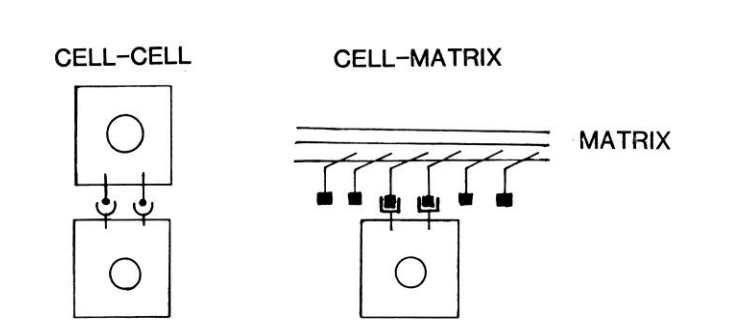
Important roles of these interactions (2)
Cell adhesion→ hold cells together and attached o extracellular matrix
(using adheive properies) Signalling functions
allows cells to communicate cell-cell or receive information from the cell matrix
Example of cell-cell signalling: Notch-Delta Development of neural cells
Development of neural cells from epithelial in drosophila
developing neurall cells presnts a transmemrbane protein: delta
Acts as a ligand for transmembrane receptors Notch
on neighbouring epithelial cells
Activation of the Notch receptors prevents the cell from becoming a neurone
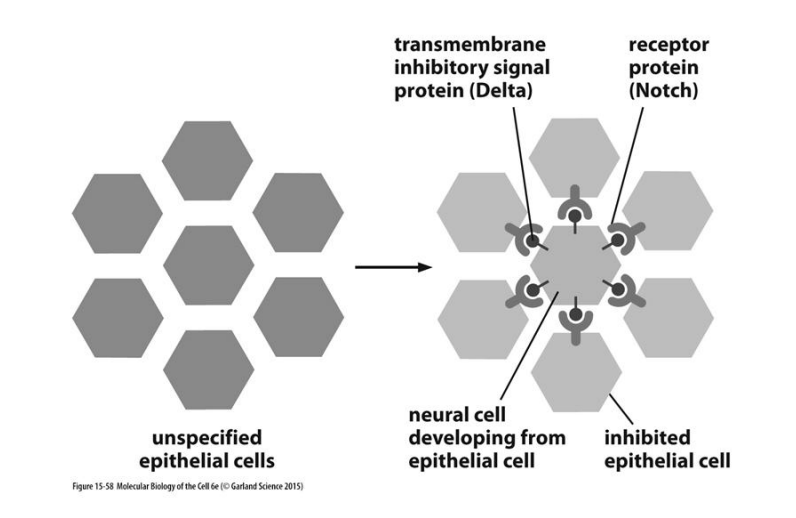
Intercellular messengers
messengers from one cell to another directly
Types of intercellular messengers
Gap junctions
Plasmodesmata
Gap junctions
formed where membranes of opposing cells are joined by cylindrical channels of 1.5-2nm in diameter: Connexons
Each spans one membrane so two form on top of eachtoher to form a pipe line between the two cells
Each connection is composed of 6 subunits
→ Forms as channel of 1.5 nm in diameter
What can pass the gap junctions
ions
small molecules of MW < 2000
Other messengers:
→ cAMP, IP3 and Ca2+
diffuse from one cell to the next
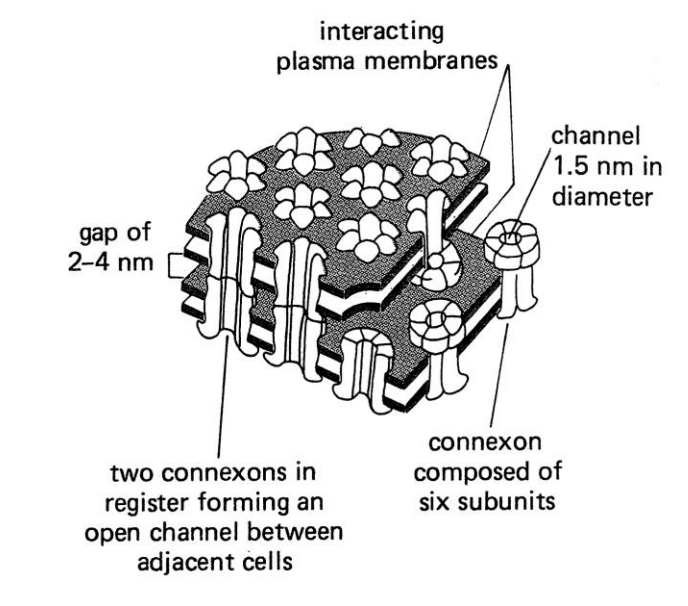
Example of gap junction use
used in depolarisation spread in cardiac muscle cells
The permeability of gap junctions is regulated
Decrease in cytostolic pH/ increase in Ca2+:
reversibly decreases permeability
WHY?
Suggests there is cell death next door
Plasmodesmata
Specialised junctions found in plants:
Tubular extension of plasma membrane plasmodesma
40-50nm in diameter
Extensions of endoplasmic reticulum desmotubules pass through plasmodesma
What do desmotubules do
allow diffusion of molecules up to 1000 Daltons
→ Allows for intercelular transport of metabolites, signalling molecules and proteins
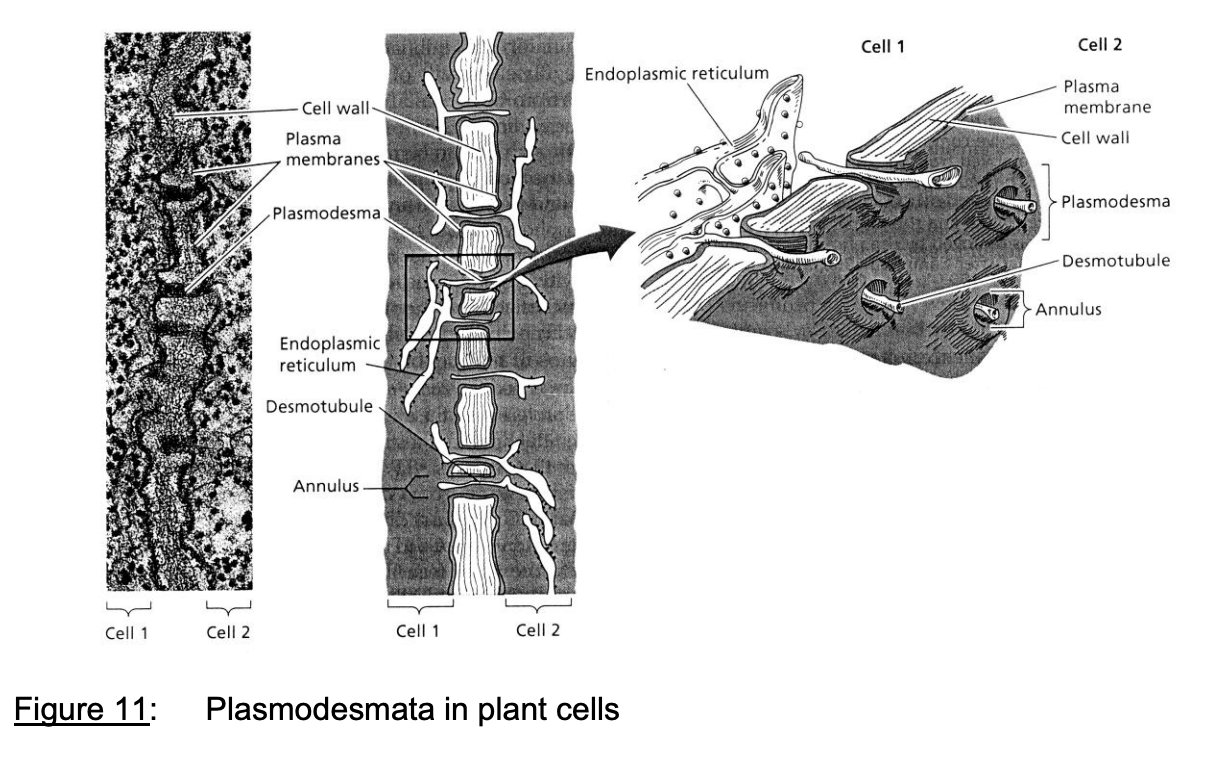
Self assessment questions:
1. What is cell signalling?
2. How is information transduced in signalling systems?
3. How do cells transmit signals?
4. What do cells use to receive signals?
5. Over what scales does cell-to-cell signalling occur?